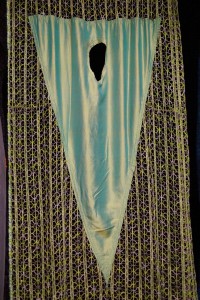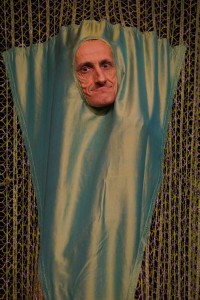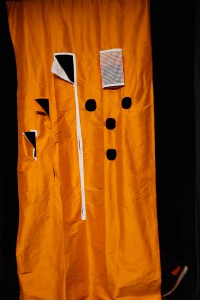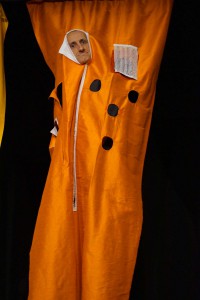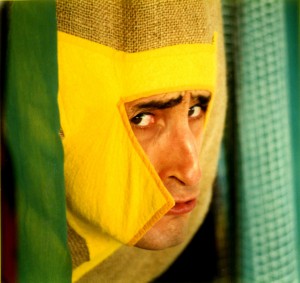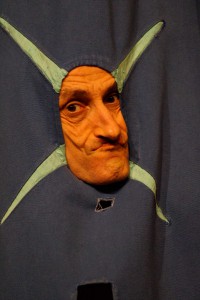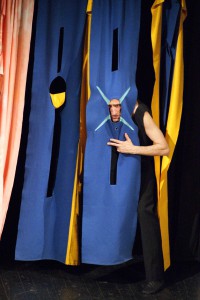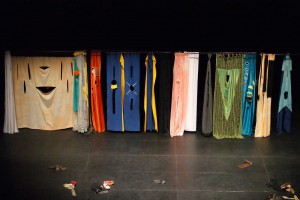Pitecus
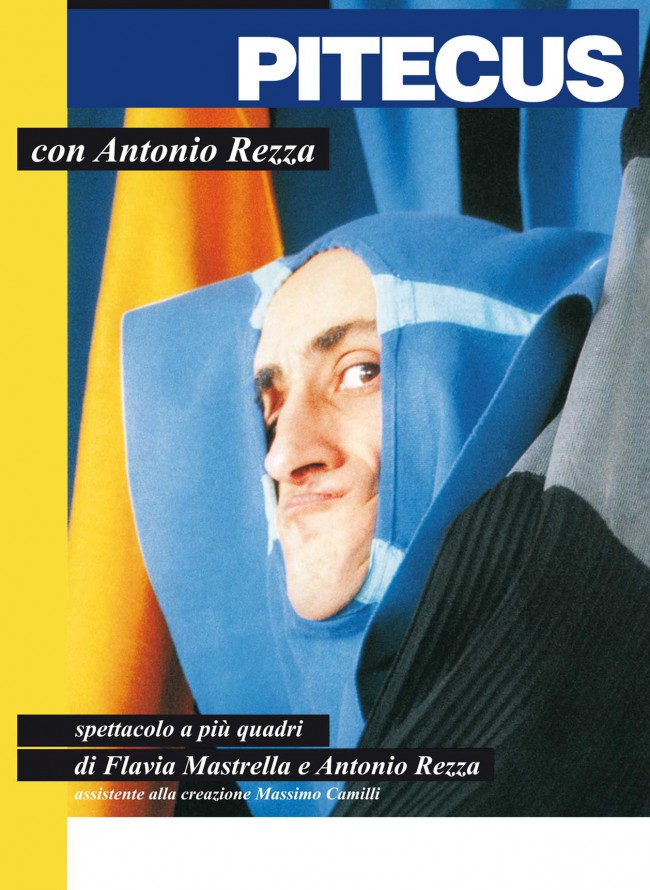
(1995)
by Flavia Mastrella, Antonio Rezza
with Antonio Rezza
quadri di scena: Flavia Mastrella
(never) written by Antonio Rezza
assistant to the creation: Massimo Camilli
lighting design: Mattia Vigo
organization: Stefania Saltarelli
stagehand: Andrea Zanarini
Sartoria Nennella
production:
REZZAMASTRELLA
TSI La Fabbrica dell’Attore Teatro Vascello
press office: Chiara Crupi
web communication: Silvia Vecchini
Before the man crows twice and denies his free spirit, there, in contact with the cockerel, the man will raise his elbow and his crest and smash his lowest ambitions against a ceiling of useless hope.
The story
Gidio is shut up at home, Fiorenzo, a restless man, is physically sick; Professor Stella, an addicted videodictator, shows thousands of viewers some terminally ill patients, a verbose father cannot get used to the homosexuality of his son; Saverio, easy-going and emancipated, takes life as it comes, aware of his fleeting charm. Mirella prays intensely that she will be given a job at the post office; Roscio, (Carrot-top), by name and fame, hangs out with a new bunch of friends who taunt him ferociously. Sleeping Beauty suffers from insomnia and the king, tired of nappies and tantrums, tries to asphyxiate the baby body. A young student has a conflictual relationship with a radio alarm while bored, lecherous husbands are enraptured by the indiscreet charm of the same old Saverio, a bourgeois who reaps love and rents sentiments. A new dark debate analyses the man-drug relationship, a single, mediocre gentleman adopts Fernando Rattazzi with a sponsorship, two girls are stranded on foot and challenge the laws of endurance, men who try to enjoy flashes of freedom but, since they’re only flashes, they don’t even recognize it as freedom. Disabled youngsters, nasty and supportive, lash out against created and convictions, beings without optimism divide their own bodies keeping intact the devilish instinct.
These characters speak a ragged, apocopated dialect, they move nervously, they peep out of the cracks and holes in the multi-coloured vases, the thinking minds and little heads pop out in turn from the silks, the nets and the jute giving a sense of crowded, working-class districts where play and fantasy raise the banner of standard comprehension. The scenic picture is the scenography mixed with the costume, every story has its own habitat, every character a different, mortified body.
It’s a show that analyses the relationship between man and his perversions: people with degrees, people overworked, young and desperate, in search of a chance to fill their pockets and increase their fame, multi-decorated for morality speculating on other people’s misery, old people in search of an identity to help them kill time before time kills them, people who carry on their ordinary lives, individuals who sell their own bodies in exchange for a purely materialistic well-being, beings who travel in order to enrich their exterior, superficial cultural competences.
Pitecus tells the stories of many different people, a coming and going of people living in a messy microcosm: bits of reality follow on with no common thread, sublime nastiness making even the most delicate topics funny and aggressive. Positive representations don’t exist, each one has to make do, they all feel like victims, they work in order to hide away, they buy sentiments and dignity, they don’t love, they create dullness and dis-service.
The characters are ugly, somatically and inwardly, they exude political and social indifference from all their pores, they’re sunk into anonymity but, thanks to their narcissism, they’re convinced of being original, contemporary and, in the most brazen cases, avangarde. They speak a mixed dialect, they’re very colourful, they move nervously and, through the recital, they take on mythical, caricature-like, almost comic-book shapes.
Quadri di scena
As for the stage frames, which we consider a work of art applied to dramaturgy, they confer a figurative language to the show, mixing colours and words.
The use of the materials refers to Arte Povera even though one eye is always attentive towards the trends and customs that influence the characters’ mentality and behaviour.
In the frames of “Pitecus” the triangle prevails – a mystical figure in most religions: angular heads feign rational reasonings, facial segments make the already evil, corrupt appearances even nastier.
Colours used are opaque – yellows, greens, light blues, reds, reminding one of childhood, of building blocks, wooden toys.
The cloth that enfolds the characters and completes them: jute, silk, cotton, synthetic materials, plastic – making them either opaque or shiny. Body parts attacking parts of reality, portions of art that inveigh against the narcosis that seems to create havoc in men and desires, apocopated words that sing the praises of free imagination: not everything has been invented, not everything has been enunciated, words are infinite and infinite are the combinations, he who wants to believe that there’s nothing else to discover is the first enemy to fight against.
Pitecus lashes out against the culture of drowsiness and creative dormancy.



